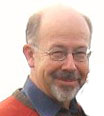Geoforensics and Information Management for crime Investigation (GIMI)
Project Staff - Professor David L. Hawksworth CBE

David is Professor of Biosciences in the University of Gloucestershire, a Research Professor in the Universidad Complutense de Madrid, and a Research Associate at the Natural History Museum London.
He is a mycologist and environmental scientist, who is a leading world authority on the diversity, systematics, and ecology of fungi, especially microfungi and lichens. He is particularly known for studies on fungal diversity, the bioindication of sulphur dioxide air pollution using lichens, and the use of molecular phylogenetics to resolve classifications. Other interests include biodiversity and its conservation, and the development of nomenclatural systems for all groups of organisms.
He has PhD and DSc degrees from the University of Leicester, and an Honorary Doctorate from the University of Umea in Sweden.
He was the last Director of the former International Mycological Institute at Kew and Egham, Surrey (1983-97), is an Honorary President of the International Mycological Association, and has served as President of the International Union of Biological Sciences (1994-97), British Mycological Society (1990), and British Lichen Society (1986-87). He was the first to be awarded the Bicentenary Medal of the Linnean Society of London (1978), holds the Acharius Medal of the International Association for Lichenology (2002), is an honorary member or fellow of many learned societies, and has been appointed as a Visiting Professor in the Universities of Kent, London, and Reading. He served a Government appointee on the Council of English Nature (1996-99), and was appointed Commander of the British Empire (CBE) in 1996 for services to science.
From 2000-2008 David was Executive/ Senior Editor of Mycological Research, and is currently Editor-in-Chief of Biodiversity and Conservation. He is the author/co-author of over 580 scientific publications, and author/editor/co-editor of 55 books (including three editions of the Dictionary of the Fungi). Further, he has introduced 856 new scientific names for fungi, including 73 genera of fungi new to science.
David is increasingly sought to use his 40 years experience in fungal identification in forensic mycology, and has, for example, worked for three police forces in the last year. He also undertakes field surveys, training courses, environmental impact assessment, the preparation of specialist reports, and consultancies involving litigation, on a wide range of issues involving fungi (including lichens).

